Château de Lacquy
The property
The Château de Lacquy estate is located in Gascony, approximately 110 km south of Bordeaux, in the Landes part of the “Bas-Armagnac” appellation. Owned by the same family since 1711, it is the oldest family estate producing Armagnac. Cultivated since the 18th century by successive generations of passionate men and women, the estate allows us to take a real journey through time thanks to this exceptional stability and continuity.
Since the Middle Ages the estate has retained its territorial influence, passing into the hands of several large Gascon families, including the Mesmes until 1668, then the Pontacs (owners of Château Haut-Brion) until 1711.
Today it has an area of around 400 ha in one piece, including 25 ha of vines devoted to the production of Armagnac.
The estate continues its tradition of excellence by carrying out the entire Armagnac production process on site, from vine cultivation to wine production, distillation, aging and bottling, in a 300-year-old tradition.
Armagnac producer since 1711
In the same family since 1711, Château de Lacquy is the oldest family producer of Armagnac. Since this date, Château de Lacquy has remained in the same family, until the current owner, Gilles de Boisséson, representing the tenth generation to succeed one another in Lacquy.
At the beginning of the 18th century, the development of a wealthy nobility and bourgeoisie with refined tastes in the United Kingdom and Scandinavia, as well as the development of merchant and military navies, created a demand for brandies forcing producers of armagnac and cognac to organize themselves.
It was in this context that the Château de Lacquy estate was purchased in 1711, in the last years of the reign of Louis XIV, to produce Armagnac.
The Château's archives show that the estate was an important producer of Armagnac in the 18th century using only the estate's Piquepoult (Folle Blanche) wines, distilled on site with the estate's still, transported until the beginning of the 20th century. by oxcart to Mont-de-Marsan, then from there, by boat, to Bayonne from where it was exported.
A family estate
Château de Lacquy is a family estate typical of a Gascon estate producing Armagnac but having other activities and productions such as cereals and vegetables.
The current castle was built in 1777 on the site of the old stately house. It was remodeled in 1910 with the construction of the north and south pavilions.
The cellar built in 1876 for the aging of Armagnac, is built very traditionally in stone, wood and tiles. It replaced an older cellar which appears on the plans of the estate made in 1825. The thickness of the walls, the narrowness of the openings, the dirt floor, the insulation due to the wooden attic and the tiled roof , the shade that surrounds it, its natural ventilation system, ensures constant humidity and very slow temperature variations, ideal conditions for the aging of Armagnac.
The park which surrounds them is typical of the airial which is found around all the old Landes houses, composed mainly of oaks. In Lacquy, some of them date from the reign of Louis XV. Wild animals abound there, because the area constitutes a closely guarded reserve, away from noise and pollution. In winter, thousands of woodpigeons stay there and it is common to see wild animals, hares, deer, wild boars, badgers, genets walking peacefully around.
It is therefore in an exceptional ecological setting that the estate's vines dedicated to the production of Armagnac flourish.
The climate
The estate is located at an altitude of 120 meters, on the edge of the Landes forest and the slopes of the Gers, in the very heart of the region called “Grand-Bas-Armagnac” or “Armagnac Noir” due to the proliferation of forests. of oaks with dense foliage, renowned for the exceptional finesse of its Armagnacs.
The region has a mild and humid oceanic climate. Although the weather is influenced and tempered by the nearby Atlantic Ocean, summers can be very hot and there can be severe thunderstorms.
Average temperatures in winter vary from a minimum of 0°C to a maximum of 11°C. Summer temperatures range from 15°C to a maximum of 28°C. Despite these averages, temperatures of -10°C in winter and 38°C in summer are common.
Average precipitation varies from 50 mm in July to 100 mm in October and reaches an annual average of around 1000 mm. In summer, there can be a temperature difference of 30°C between morning and afternoon, which gives rise to violent storms. The prevailing winds come from the west. There are northwest breezes in summer and in spring, southerly winds can carry sands from the African desert.
The soil
On the surface the soil is light, acidic and composed of fine clayey quartz sands, colored by small quantities of iron hydroxides and marine sediments called “tawny sands”.
Between 30 and 40 meters deep, the Oligocene aquifer is composed of marine limestone. It is covered by Miocene sediments which included two marine episodes, the Aquitanian and the Helvetian. These episodes resulted in new limestone deposits largely drained by rivers or streams. This limestone ensemble is covered by the clay-sandy formation of the upper Miocene and Pliocene called “tawny sands”. This ensemble is of varying thicknesses on the property, and semi-permeable, drained by multiple sources which flow towards the Helvetian limestones, forming small “canyons” up to 35m deep.
Compared to the rest of the “Bas-armagnac” appellation, the Lacquy terroir is distinguished by the depth and diversity of its sands in which there is little clay. This very exceptional terroir produces eaux-de-vie of great finesse and a very long finish.

